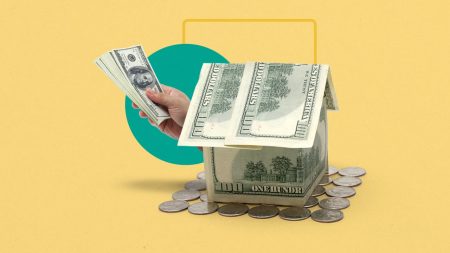Key takeaways
- You can refinance your student loans as often as you want — there’s no legal limit.
- Refinancing more than once could net you a lower rate if your credit score has improved, helping you save thousands of dollars in interest.
- Before you refinance a second time, understand the disadvantages that come with it.
As long as you qualify, you can refinance your student loans as many times and as often as you’d like. There is no legal limit on how often one can refinance, but there are consequences for doing so.
Refinancing your student loans makes the most sense when your finances or credit score improves or student loan refinance interest rates decline. Under these circumstances, it’s possible to save thousands of dollars in interest by lowering your interest rate by just a few percentage points. That said, there are some potential drawbacks to consider.
The downsides of refinancing more than once
Before proceeding with a refinance, it’s important to consider the potential drawbacks and decide whether it’s truly the right time to make this move.
Potentially higher interest rate
There is always a chance that you won’t qualify for a lower interest rate than you currently have. You should check current student loan interest rates before you apply and prequalify if possible.
Getting a higher interest rate will cost you more over the life of the loan. In combination with extending your loan term, you may still be able to lower your monthly payment, but you’ll pay more overall.
Hard credit check
The biggest risk of refinancing multiple times is that it could slightly lower your credit score. While you can shop around with lenders risk-free using prequalification, most lenders will perform a hard credit check during the actual application process.
A hard credit check allows lenders to see your detailed credit report and debt payment history, which allows the lender to determine whether you are considered a trustworthy borrower. Every hard credit check lowers your credit score by a few points.
Reduces average age of accounts
The average age of your accounts also affects your credit score. Credit scoring models prefer to see accounts that have been open for several years, and if you keep replacing your student loan with a new one, your average age of accounts will be negatively affected.
With that said, drops in credit through refinancing can be easily remedied through responsible usage. As long as you make on-time payments on your new loan, you should quickly recover any lost points.
Fees
While many lenders have done away with origination fees and application fees, you should still check whether your new lender charges them. Fees could eat into the savings you get from refinancing.
The benefits of refinancing more than once
Under the right circumstances — your personal finances have improved, or special offers are being made by the lender — refinancing can pay off.
Better terms
Refinancing multiple times can help you secure a lower interest rate, better terms or a repayment timeline that suits your financial goals. All of these can make it easier to pay off your loans or make your loan cheaper in the long run.
Promotional offers
Some lenders will offer special promotions or discounts for refinancing with them — if you spot a great deal, it may be worth it to switch to that company. Switching companies is also a good idea if you’ve had negative experiences with your current company or want to change loan servicers.
Reasons to refinance student loans
Refinancing allows you to replace your existing student loans with a new one from a different lender, with the main benefit being the opportunity for a lower interest rate or monthly payment. Some additional reasons you might consider refinancing include:
- You took out a loan when interest rates were high.
- You have a good credit score and a steady income.
- You want to remove a co-signer from your loan.
- You want to extend your repayment term to lower your monthly payment.
If you have all federal student loans and are having trouble making the monthly payments, refinancing shouldn’t be your first relief option. The federal government offers hardship relief, alternate repayment options and loan forgiveness that private lenders don’t offer, and all loans that you refinance will immediately become private.
However, if you have all private loans and a good credit score, refinancing could be a smart money move, especially if you have trouble keeping up with multiple loans or have a higher interest rate. You can refinance as many times as you’d like as you improve your credit score and qualify for lower rates.
Next steps
Before making the jump to refinance, get prequalified with a few lenders to see what rates you’re offered. From there, you can run the numbers through a refinance calculator to see whether your new loan will be worth it in the long run. When you’re ready to refinance, you can submit an application with your lender — and have your new loan within a matter of weeks.
Read the full article here
















